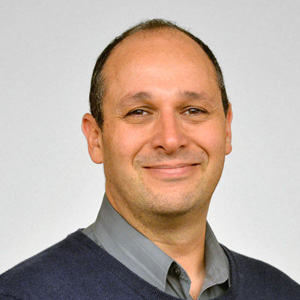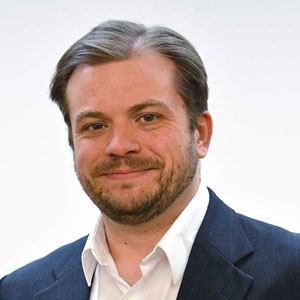Quantitative Training Psychology
Overview
Our department has a reputation for high quality quantitative training. At the University
of Utah, our work bridges innovative substantive questions, demanding data characteristics,
and advanced statistical methodology to stay at the forefront of psychology and applications
of psychology to health, technology, computer science, engineering, and data science.
We strive to push the field forward while drawing on a long history of mathematical,
statistical, and methodological innovations.
What is Quantitative Psychology
Quantitative Psychology is the innovation and application of mathematical modeling, statistical tools, and methodological advances that are specific to the study of the human mind. Psychological processes are not only more complex than processes in many other fields, but analyses in psychology are inherently challenging due to data that are often limited, noisy, and incomplete. Quantitative Psychology, therefore, focuses on what and how inferences can be made under these extremely messy circumstances. Quality training in Quantitative Psychology is a highly sought-after skillset inside and outside of academia.
Strengths
- Team Science Oriented. The Psychology Department at the University of Utah is highly collaborative both within the department and across campus. We commonly function in a team science atmosphere where multiple people work together to produce higher quality research than can be conducted alone. The quantitative faculty currently maintain collaborations across all areas in the department as well as collaborations with nursing, psychiatry, and computing. These connections span across the country including UNC Chapel Hill, Penn State, Ohio State, and Utah State just to name a few. Quantitative psychology is a key part of these collaborations and the quantitative faculty embrace collaborative approaches to graduate training
- Broad Carefully Designed Training. Consistent with recommendations on quantitative training, our courses focus on both depth and breadth with emphases on comprehension and application. Our course offerings are designed with milestones in mind. The first-year quantitative sequence is tailored to focus on preparation for completing a masters. Mid-level courses broaden training and advanced courses help develop expertise and depth.
- Quantitative Consulting. Our quantitative faculty offer consultation for departmental faculty and graduate students during the fall and spring semester. These hours are designed to help departmental members get a better grasp of their own work, elevating their research.
- SPAM (Statistical Practices, Advancement, and Methods). SPAM is a quantitative brown bag for faculty and students across campus. Speakers are invited to give talks, either presenting new ideas or seeking assistance from the knowledge base of the SPAM participants. SPAM is open to anyone.
- Integration into each of the four areas. Our Quantitative faculty are each housed in the department areas. This helps promote collaboration, balancing both applied and basic approaches to quantitative science.
Prospective Students
We accept a range of students interested in quantitative psychology. Students are housed in one of the four areas (Social, Developmental, CNS, Clinical), earning a Ph.D. in that area while simultaneously developing enhanced quantitative skills, mentored by one of our quantitative faculty members. Given the collaborative nature of the department, students are often co-mentored (e.g., one quantitative faculty member and one non-quantitative faculty member), which can include faculty members from differing areas, allowing a student to have an area of study while working closes with quantitative or non-quantitative faculty members in other areas.
Faculty with a Quantitative Focus

Brian Baucom, Associate Professor
Brian’s quantitative work is focused on methodological development of multimodal measurement and statistical models for characterizing behavioral and emotional processes across multiple timescales as they happen in daily life. He uses a combination of passive sensing (e.g., smart devices, ambulatory audio recordings, ambulatory physiology, etc.), ecological momentary assessment, and prompted behavioral sampling to collect data and signal processing, natural language processing, and observational coding to quantify affect, behavior, and affective/behavioral indicators. He frequently collaborates with computational psychiatrists, computer scientists, and engineers to incorporate machine learning, artificial intelligence, and generative artificial intelligence into his work and served as co-lead of the health and well-being committee of UU’s Responsible Artificial Intelligence initiative. He is in the clinical area and is particularly interested in the application of these methods to predicting future risk for mental health outcomes (e.g., onset of anxiety and depressive disorders) and adverse mental health events (e.g., risk for future suicidal ideation).

Jonathan Butner, Professor
Jonathan’s work specializes in applying and innovating statistics and methods for studying phenomena over time. He self-describes as a dynamical systems theorist or complexity scientist that embraces the idea of emergence – many things are interacting through time to make higher order behavior that cannot be easily understood from its lower order parts. He specializes on expanding and applying techniques that are informative if emergence is descriptive of psychology. He has an extensive history of work applying these concepts to all areas of psychology and the social sciences more generally. He also expands current statistical and methodological approaches that align with this assumption. Jonathan is part of the social area and has worked with visiting professors, post-docs, and graduate students across all departmental areas.

Pascal Deboeck, Associate Professor
Pascal focuses on the development and application of methods for analyzing intensive, intraindividual time series. In particular, he works on the development and application of derivatives, differential equation modeling, and dynamical systems concepts to time series that have characteristics common to behavioral and some physiological measures, such as relatively low sampling rates, large amounts of measurement and/or dynamic error, and unequally spaced or missing observations. In analyzing such data, the focus is often on questions related to the role of variability and less-stable change (the “error” in many statistical models). These methods have the potential to inform theories that address how, when, and why people change over time.

Brenna Gomer, Assistant Professor
Brenna is a missing data researcher with secondary interests in structural equation modeling and robust methods. In her missing data research, she has named two subtypes of the Missing Not At Random (MNAR) mechanism called focused and diffuse MNAR. She has also considered scenarios in which several missing-data mechanisms can be present simultaneously. Other work includes developing effect sizes for Structural Equation Modeling (SEM) and smoothed quantiles for chi-squared type test statistics. Brenna is part of the social area and also collaborates with other researchers on topics such as cross-cultural equivalence of survey instruments, mental health in engineering students, and the social context of nonsuicidal self-injury.
Graduate Statistics Courses - 5 Year Schedule
Annual Offerings:
- Quantitative Methods I
- Quantitative Methods II
Offered approximately every two years:
- Multilevel Modeling: Last offering Spring 2022; Next offering not yet planned.
- Structural Equation Modeling: Last offering Fall 2022; Next offering Fall 2024 very likely.
- Analysis of Temporal Variance: Available Fall 2023; Next offering not yet planned, but possibly Fall 2025.
Offered only every 3-6 years:
- Structural Equation Modeling II: Next offering may be 3+ years.
- Systems: Last offering: Next offering may be 3+ years.
- Multilevel Modeling II: Last offering Spring 2023; Next offering may be 3+ years.
Rare Offerings:
- Workshop:
- Non-linear dynamics:
Courses
| Quant Methods I | Quant Methods II | MLM I | MLM II | SEM I | SEM II* | Apriori | Messy Data | Temporal | Dynamical Systems | Consulting | Intraindividual | Trial Design | |
| Spring 2025 | XXX | XXX | XXX | XXX | |||||||||
| Fall 2025 | XXX | XXX | XXX | ||||||||||
| Spring 2026 | XXX | XXX | XXX | XXX | |||||||||
| Fall 2026 | XXX | XXX | XXX | ||||||||||
| Spring 2027 | XXX | XXX | XXX | ||||||||||
| Fall 2027 | XXX | XXX | XXX | XXX | |||||||||
| Spring 2028 | XXX | XXX | XXX | XXX | |||||||||
| Fall 2028 | XXX | XXX | XXX | ||||||||||
| Spring 2029 | XXX | XXX | XXX | XXX | |||||||||
| Fall 2029 | XXX | XXX | XXX | ||||||||||
| Spring 2030 | XXX | XXX | |||||||||||
| Fall 2030 | XXX | XXX | XXX | ||||||||||
| Spring 2031 | XXX | XXX | XXX |
Requirements
- Quant Methods II requires Quant Methods I or Equivalent (Test)
- All Other Courses require Quant Methods I and Quant Methods II or Equivalent (Tests)
